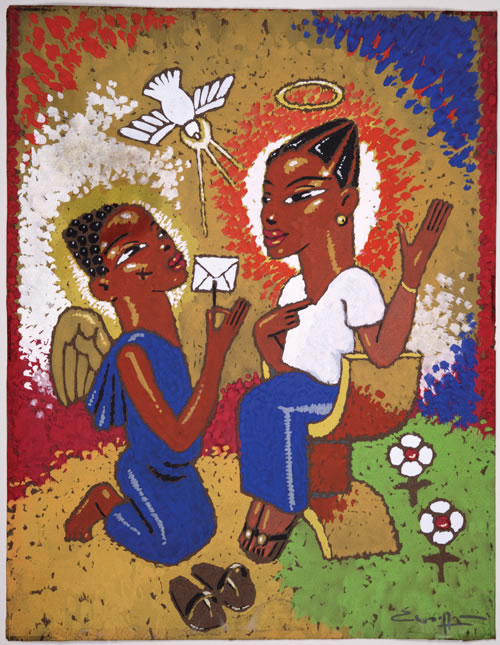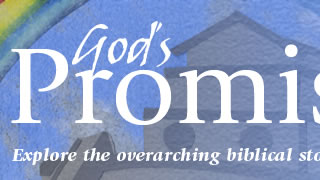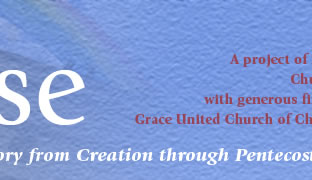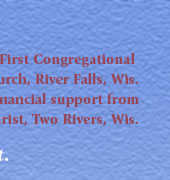
 Annunciation to Mary
Annunciation to Mary
Core Lesson
When all the participants have arrived, invite the children to gather together. Welcome them and make introductions. Give them a brief overview of what the day will bring, what they will study and think about, and the activities they will do. Promise them that it will be fun!
The first part of the lesson will serve to set the stage for the day’s biblical study. Your conversation could proceed in this way:
Let’s talk about being an artist. Pretend that you want to paint a picture of a story in the Bible. Once you’ve gathered paints, a canvas, brushes, and all the other stuff you need, what do you do next?
If you want people to see the story through your painting, what information would you need to include? How would you show action? How would you suggest feelings?
Distribute copies of the student pages and refer to the painting on page 4. This watercolor by Paul Woelfel of Nigeria, Annunciation, is the title of the Bible story in which the Angel Gabriel announces to Mary that she would be the mother of God’s son.
- What do you see in this picture? What else do you see?
- Who are the characters? How can you tell? What do you think is the significance of the dove?
- What is going on in the painting?
- What do you think is the significance of the envelope?
- How do you think Mary feels? How can you tell?
- What other things do you notice about the way the painting tells the story?
Next, connect the Woelfel painting to Luke 1:26-38 and Luke 1:46-55. Locate and read Luke 1:26-38, either from the Bible or on the bottom of the front page of the student pages. Consider the following:
In the Bible, angels are God’s messengers. What was message did Gabriel deliver?
Think of ways that Gabriel’s message was surprising. Mary probably didn’t expect to have an angel visit her! Mary was very young and not an experienced mother. Mary was poor; often people chosen for important responsibilities are wealthy. Mary was not recognized as a leader and yet she was chosen to have an important role in God’s plan.
Can you think of other stories in the Bible when God chooses unlikely people to do important things? Moses, called to be a leader, was not a good speaker. Zacchaeus, called to host Jesus, was not an honest man. David, called to be a king, was just a boy when he was anointed.
Turn the group’s attention to this lesson’s featured timeline image, on page 1 of the student page.
- What do you see in this picture? What else do you see?
- Compare this image to the Woelfel painting. How are they the same? How are they different?
- Identify important features of the image that match the Bible story.
Continue your lesson in a way similar to the following:
Gabriel’s message to Mary is amazing. What is even more amazing is Mary’s response. We would all probably understand if Mary wanted to run away, and say “No!” But Mary didn’t. St. Luke tells us that Mary agreed to do what God wanted even though she was troubled and unprepared for what would come. St. Luke tells us that Mary responded by singing a song.
Turn to page 2 of the student page. Ask one student to read voice 1 and a second student to read voice 2. Alternately read each section of the Bible text (voice 1) followed by the “What’s Going On?” section in the yellow bubbles (voice 2).
Explain to the students that Mary’s Song says that God will turn the world right side up. The baby Mary will have, Jesus, will show the world a new way of being. Everything in the world will be turned and changed until it is as God wants it to be. Mary gives us clues about how this will look:
- People who think they are more important than others will find that they are not. Everyone is important.
- No one will have more than they need so that everyone has what they need.
- Those who are hungry will be filled with good things.
- Mary’s Song paints a new picture of our world. It is a beautiful picture.
Ask the students to brainstorm a list of things in the world that need to change so Mary’s Song is true. How does or how can your family or congregation help people who are hungry?











